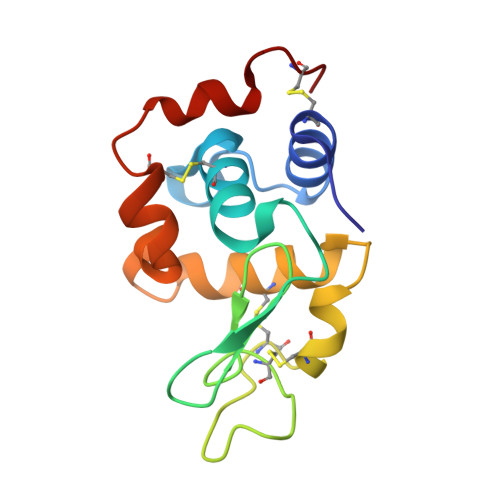Serial crystallography with multi-stage merging of thousands of images.
Soares, A.S., Yamada, Y., Jakoncic, J., McSweeney, S., Sweet, R.M., Skinner, J., Foadi, J., Fuchs, M.R., Schneider, D.K., Shi, W., Andi, B., Andrews, L.C., Bernstein, H.J.(2022) Acta Crystallogr F Struct Biol Commun 78: 281-288
- PubMed: 35787556
- DOI: https://doi.org/10.1107/S2053230X22006422
- Primary Citation of Related Structures:
8DCT, 8DCU, 8DCV, 8DCW - PubMed Abstract:
KAMO and BLEND provide particularly effective tools to automatically manage the merging of large numbers of data sets from serial crystallography. The requirement for manual intervention in the process can be reduced by extending BLEND to support additional clustering options such as the use of more accurate cell distance metrics and the use of reflection-intensity correlation coefficients to infer `distances' among sets of reflections. This increases the sensitivity to differences in unit-cell parameters and allows clustering to assemble nearly complete data sets on the basis of intensity or amplitude differences. If the data sets are already sufficiently complete to permit it, one applies KAMO once and clusters the data using intensities only. When starting from incomplete data sets, one applies KAMO twice, first using unit-cell parameters. In this step, either the simple cell vector distance of the original BLEND or the more sensitive NCDist is used. This step tends to find clusters of sufficient size such that, when merged, each cluster is sufficiently complete to allow reflection intensities or amplitudes to be compared. One then uses KAMO again using the correlation between reflections with a common hkl to merge clusters in a way that is sensitive to structural differences that may not have perturbed the unit-cell parameters sufficiently to make meaningful clusters. Many groups have developed effective clustering algorithms that use a measurable physical parameter from each diffraction still or wedge to cluster the data into categories which then can be merged, one hopes, to yield the electron density from a single protein form. Since these physical parameters are often largely independent of one another, it should be possible to greatly improve the efficacy of data-clustering software by using a multi-stage partitioning strategy. Here, one possible approach to multi-stage data clustering is demonstrated. The strategy is to use unit-cell clustering until the merged data are sufficiently complete and then to use intensity-based clustering. Using this strategy, it is demonstrated that it is possible to accurately cluster data sets from crystals that have subtle differences.
Organizational Affiliation:
Center for BioMolecular Structure, Brookhaven National Laboratory, Upton, New York, USA.


















